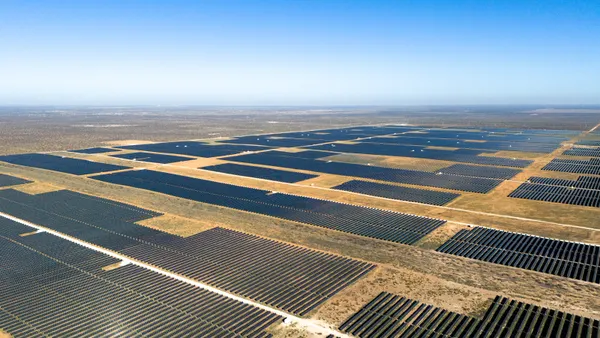Dive Brief:
- The Electric Reliability Council of Texas set three new records for July peak demand last week in three consecutive hours, ultimately peaking at 68,799 MW between 4 p.m. and 5 p.m. on July 20.
- Temperatures in major Texas cities approached triple digits, slightly above the seasonal average last week.
- Despite the three hourly peak load records, grid officials say they are prepared this summer. ERCOT anticipates summer demand to peak near 73,000 MW, while total generation will be close to 82,000 MW.
Dive Insight:
A summer heatwave has sent load higher in several regions, but in the Lone Star State last week, the impact was most impressive.
The previous July peak was set two years ago, at 67.7 GW. Last week, in three consecutive hourly blocks, ERCOT peak load rose from 67.8 GW to 68.5 GW to almost 68.8 GW.
But while ERCOT officials do not expect trouble in meeting demand this season, the region does face shrinking summer reserve margins. The grid operator's Seasonal Assessment of Resource Adequacy said summer reserves would fall from 18.9% in 2018 to 9.6% in 2027, likely due to load growth as the state's economy continues to grow.
Last year, the grid's peak demand surpassed 70,000 MW nine times — and peaked at 71,110 MW. ERCOT is adding more resources. More than 10,000 MW of planned resources are included for 2018, adding more than 5 GW of capacity to meet anticipated summer peaks.
In PJM Interconnection, peak load hit a high of 146,533 MW, but fell below last year's summer high of 152,178 MW. The New York grid operator reached a high of 29,699 MW, the highest since last August. And in the Midcontinent Independent System Operator's region, peak load hit 120,233 MW, just a few hundred megawatts below last year's high of 120,764 MW.














